
Wetenschap
Ruimtestation markeert 20 jaar mensen die in een baan om de aarde leven
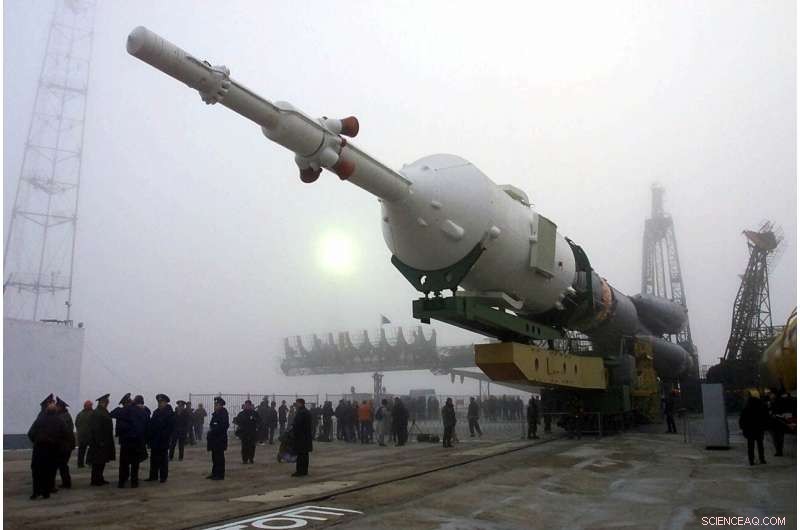
In deze 29 oktober, 2000, bestand foto, de Sojoez-booster wordt getransporteerd naar het lanceerplatform op de Baikonoer-kosmodrome in Kazachstan. Twee dagen later, Amerikaanse astronaut Bill Shepherd, en de Russische kosmonauten Sergei Krikalyov en Yuri Gidzenko schoten weg om de eerste bewoners van het internationale ruimtestation te worden. (AP Foto/Mikhail Metzel, Bestand)
Het internationale ruimtestation was een krap, vochtig, nietige drie kamers toen de eerste bemanning er introk. Twintig jaar en 241 bezoekers later, het complex heeft een uitkijktoren, drie toiletten, zes slaapcompartimenten en 12 kamers, afhankelijk van hoe je telt.
Maandag markeert twee decennia van een gestage stroom mensen die daar wonen.
Astronauten uit 19 landen zijn door de luiken van het ruimtestation gevlogen, waaronder veel terugkerende bezoekers die met shuttles arriveerden voor kortdurende bouwwerkzaamheden, en verschillende toeristen die hun eigen weg betaalden.
De eerste bemanning - de Amerikaanse Bill Shepherd en de Russen Sergei Krikalev en Yuri Gidzenko - vertrokken op 31 oktober vanuit Kazachstan. 2000. Twee dagen later, ze zwaaiden de deuren van het ruimtestation open, eendrachtig hun handen gevouwen.
Herder, een voormalige Navy SEAL die dienst deed als stationscommandant, vergeleek het met het leven op een schip op zee. De drie brachten het grootste deel van hun tijd door met het overhalen van apparatuur om aan het werk te gaan; balky-systemen maakten de plaats te warm. De omstandigheden waren primitief, vergeleken met nu.
Installaties en reparaties duurden uren in het nieuwe ruimtestation, versus minuten op de grond, herinnerde Krikalev zich.
"Elke dag leek zijn eigen uitdagingen te hebben, ', zei Shepherd tijdens een recente NASA-paneldiscussie met zijn bemanningsleden.
Het ruimtestation is sindsdien veranderd in een complex dat bijna net zo lang is als een voetbalveld, met acht mijl (13 kilometer) elektrische bedrading, een hectare aan zonnepanelen en drie hightech labs.
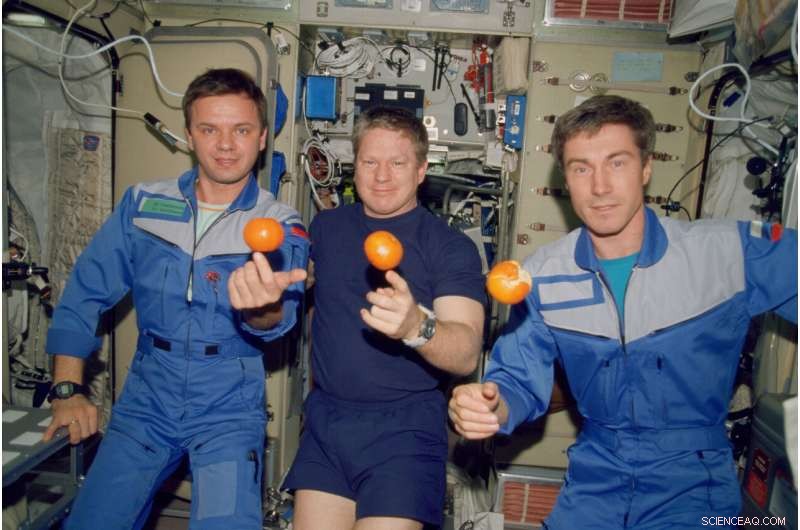
Op deze foto van NASA, de bemanningsleden van Expeditie 1 poseren met verse sinaasappels aan boord van de Zvezda Service Module van het in een baan om de aarde draaiende internationale ruimtestation op 4 december, 2000. Afgebeeld, Van links, zijn kosmonaut Yuri P. Gidzenko, Sojoez-commandant; astronaut Bill Shepherd, missie commandant; en kosmonaut Sergei K. Krikalev, vluchtingenieur. (NASA via AP)
"Het is 500 ton aan spullen die in de ruimte rondzoomen, waarvan de meeste elkaar nooit raakten totdat het daar kwam en opschoot, " vertelde Shepherd aan The Associated Press. "En het wordt allemaal al 20 jaar gerund met bijna geen grote problemen."
"Het is een echt bewijs van wat er in dit soort programma's kan worden gedaan, " hij zei.
Herder, 71, is al lang met pensioen bij NASA en woont in Virginia Beach, Virginia. Krikalev, 62, en Gidzenko, 58, zijn gestegen in de Russische ruimterangen. Beiden waren betrokken bij de half oktober lancering van de 64ste bemanning.
Het eerste wat de drie deden toen ze op 2 november bij het verduisterde ruimtestation aankwamen, 2000, was de lichten aandoen, die Krikalev zich herinnerde als 'zeer gedenkwaardig'. Daarna verwarmden ze water voor warme dranken en activeerden ze het eenzame toilet.
"Nu kunnen we leven, " Gidzenko herinnert zich dat Shepherd zei. "We hebben lichten, we hebben warm water en we hebben een toilet."
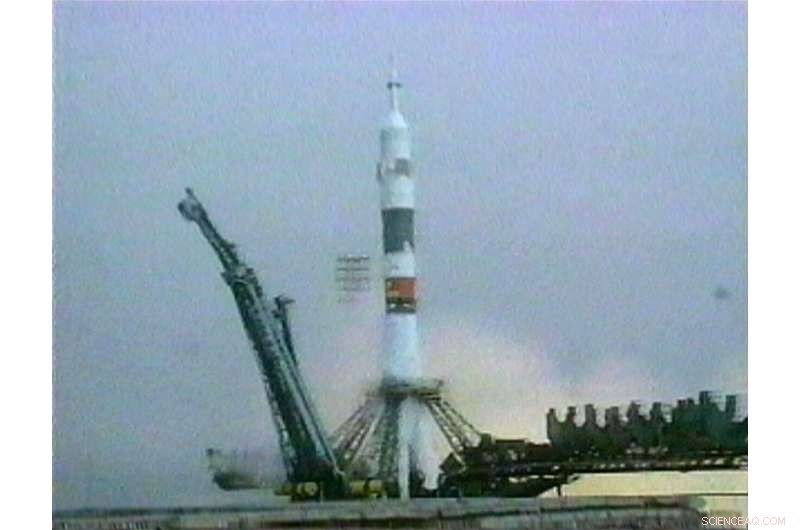
In deze 31 oktober 2000, bestandsafbeelding van video geleverd door NASA, een rookwolk omringt de Sojoez-raket, seconden voordat hij opstijgt vanaf de Baikonoer-kosmodrome in Kazachstan, met de eerste bewoners van het internationale ruimtestation. Twee dagen later, Amerikaanse astronaut Bill Shepherd, en de Russische kosmonaut Sergei Krikalev, en Yuri Gidzenko kwamen aan bij het ruimtestation. (NASA via AP, Bestand)
De bemanning noemde hun nieuwe thuis Alpha, maar de naam bleef niet hangen.
Hoewel pionierend, de drie hadden geen close calls gedurende hun bijna vijf maanden daar, herder zei, en tot nu toe heeft het station relatief goed standgehouden.
NASA's grootste zorg is tegenwoordig de groeiende dreiging van ruimteafval. Dit jaar, the orbiting lab has had to dodge debris three times.
As for station amenities, astronauts now have near-continuous communication with flight controllers and even an internet phone for personal use. The first crew had sporadic radio contact with the ground; communication blackouts could last hours.
While the three astronauts got along fine, tension sometimes bubbled up between them and the two Mission Controls, in Houston and outside Moscow. Shepherd got so frustrated with the "conflicting marching orders" that he insisted they come up with a single plan.
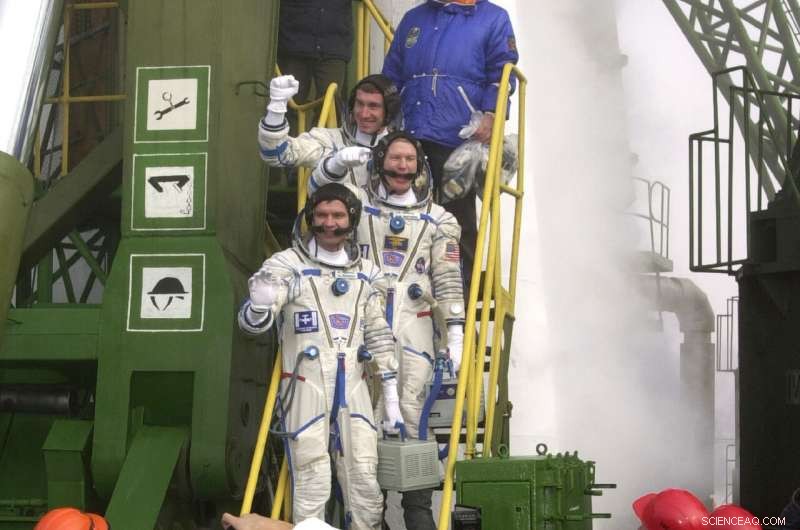
In this Oct. 31, 2000, photo provided by NASA, Expedition 1 crew members, from top, Sergei K. Krikalev, Bill Shepherd and Yuri P. Gidzenko pose for final photos prior to their launch aboard a Soyuz rocket to the International Space Station from the Baikonur Cosmodrome in Kazakhstan. Twee dagen later, they swung open the space station doors, clasping their hands in unity. Thus began 20 years of international cooperation and a steady stream of crew from around the world. (NASA via AP)
"I've got to say, that was my happiest day in space, " he said during the panel discussion.
With its first piece launched in 1998, the International Space Station already has logged 22 years in orbit. NASA and its partners contend it easily has several years of usefulness left 260 miles (400 kilometers) up.
The Mir station—home to Krikalev and Gidzenko in the late 1980s and 1990s—operated for 15 years before being guided to a fiery reentry over the Pacific in 2001. Russia's earlier stations and America's 1970s Skylab had much shorter life spans, as did China's much more recent orbital outposts.
Astronauts spend most of their six-month stints these days keeping the space station running and performing science experiments. A few have even spent close to a year up there on a single flight, serving as medical guinea pigs. Shepherd and his crew, daarentegen, barely had time for a handful of experiments.
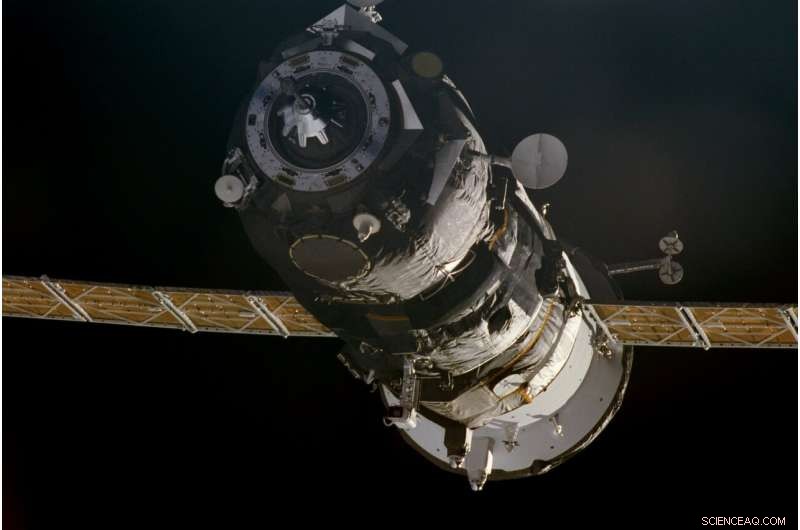
This photo provided by NASA shows a Progress supply ship that arrived on Nov. 18, 2000 to link up to the International Space Station, bringing Expedition 1 commander Bill Shepherd, pilot Yuri P. Gidzenko and flight engineer Sergei K. Krikalev two tons of food, kleding, hardware and holiday gifts from their families. (NASA via AP)
The first couple weeks were so hectic—"just working and working and working, " according to Gidzenko—that they didn't shave for days. It took awhile just to find the razors.
Even back then, the crew's favorite pastime was gazing down at Earth. It takes a mere 90 minutes for the station to circle the world, allowing astronauts to soak in a staggering 16 sunrises and 16 sunsets each day.
The current residents—one American and two Russians, just like the original crew—plan to celebrate Monday's milestone by sharing a special dinner, enjoying the views of Earth and remembering all the crews who came before them, especially the first.
But it won't be a day off:"Probably we'll be celebrating this day by hard work, " Sergei Kud-Sverchkov said Friday from orbit.
One of the best outcomes of 20 years of continuous space habitation, according to Shepherd, is astronaut diversity.
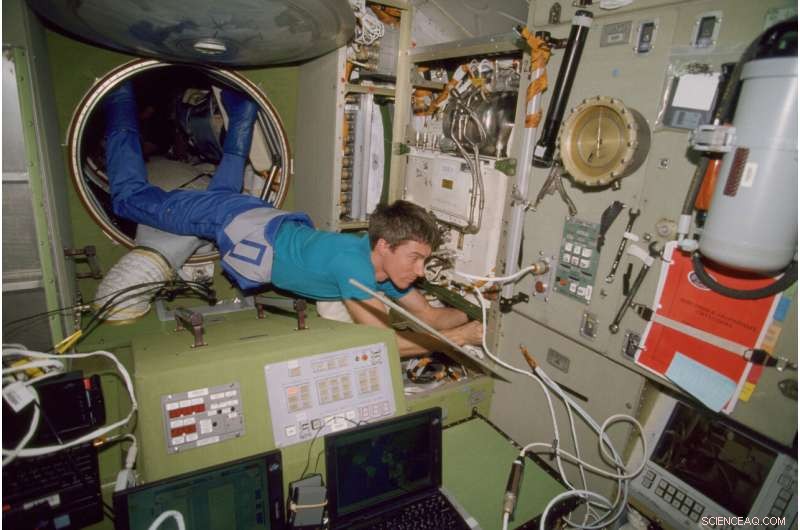
Op deze foto van NASA, Expedition 1 flight engineer Sergei K. Krikalev works in the Zvezda Service Module, with his feet anchored in a tunnel hatchway, aboard the International Space Station on Dec. 6, 2000. The space station was cramped and humid with just three rooms when the first crew moved in. Conditions were primitive, compared with now, and the three spent most of their time coaxing equipment to work. In the past twenty years, the space station has morphed into a complex that's almost as long as a football field, with eight miles (13 kilometers) of electrical wiring and three high-tech labs. (NASA via AP)
While men still lead the pack, more crews include women. Two U.S. women have served as space station skipper. Commanders typically are American or Russian, but have also come from Belgium, Duitsland, Italië, Canada and Japan. While African-Americans have made short visits to the space station, the first Black resident is due to arrive in mid-November on SpaceX's second astronaut flight.
Massive undertakings like human Mars trips can benefit from the past two decades of international experience and cooperation, Shepherd said.
"If you look at the space station program today, it's a blueprint on how to do it. All those questions about how this should be organized and what it's going to look like, the big questions are already behind us, " he told the AP.
Rusland, bijvoorbeeld, kept station crews coming and going after NASA's Columbia disaster in 2003 and after the shuttles retired in 2011.
-
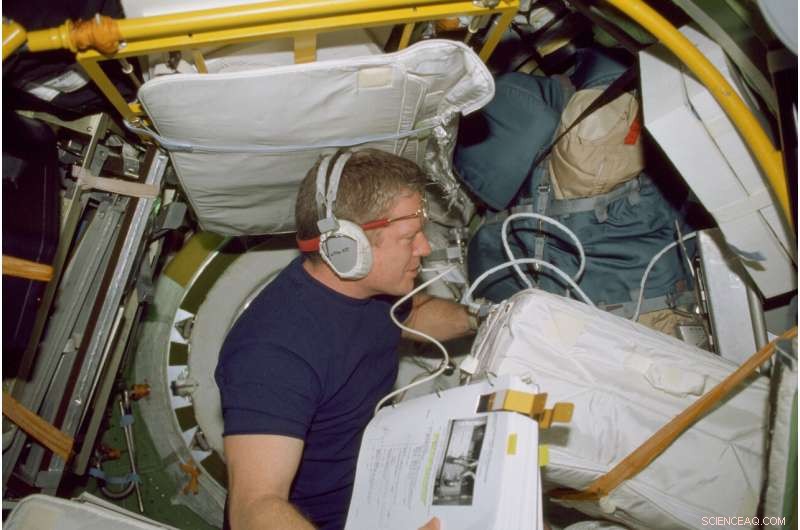
Op deze foto van NASA, Expedition 1 mission commander Bill Shepherd works in a docking compartment aboard the International Space Station on Dec. 5, 2000. The International Space Station was a cramped, humid, puny three rooms when the first crew moved in. Twenty years and 241 residents later, the complex has a domed lookout, three toilets, six sleeping compartments and 10 rooms, depending on how you count. (NASA via AP)
-
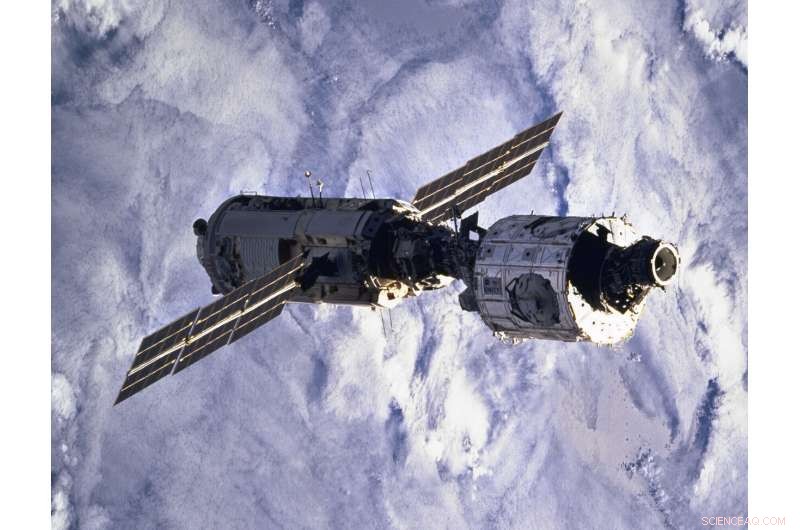
This photo provided by NASA shows the new International Space Station after the crew of the Space Shuttle Endeavour captured the Zarya Control Module, links, and mated it with the Unity Node, Rechtsaf, inside the Shuttle's payload bay. This photo was taken after Endeavour undocked from the space station on Dec. 13, 1998, for the return to Earth. Almost two years later, the first crew—American Bill Shepherd and Russians Sergei Krikalev and Yuri Gidzenko—blasted off from Kazakhstan on Oct. 31, 2000, en route to the space station. Thus began 20 years of international cooperation and a steady stream of crew from around the world. (NASA via AP)
-
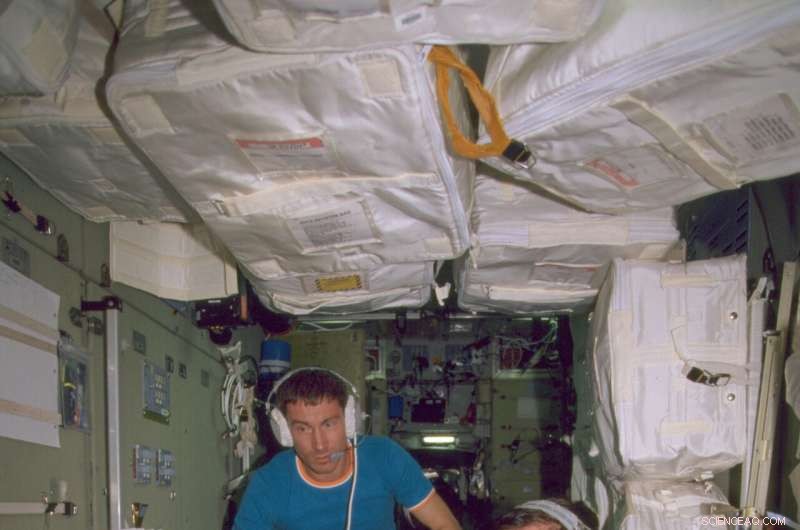
Op deze foto van NASA, Expedition 1 crew members Sergei Krikalev, links, and Yuri Gidzenko work in the Zvezda Service Module onboard the International Space Station on Nov. 8, 2000. The first crew, Russians Krikalev and Gidzenko along with American Bill Shepherd, spent most of their time coaxing equipment to work in the cramped and humid three-room space station. Twenty years and 241 residents later, the complex is almost as long as a football field, with six sleeping compartments, three toilets, a domed lookout and three high-tech labs. (NASA via AP)
-
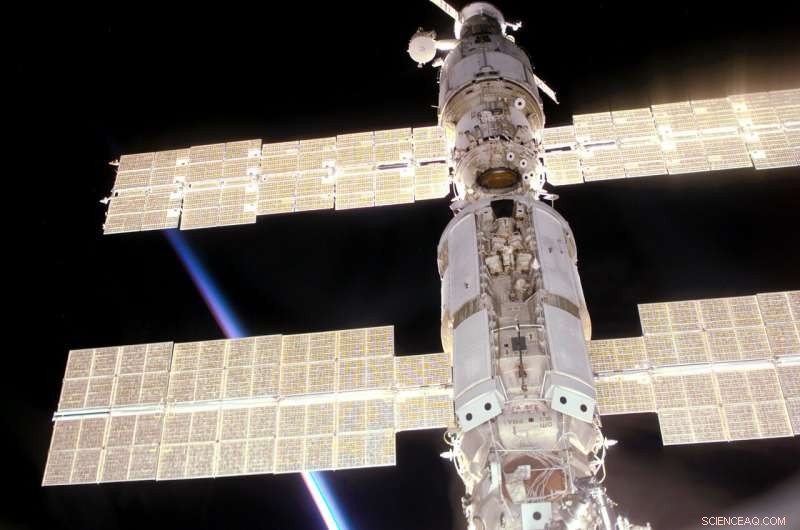
This photo provided by NASA shows the International Space Station as seen from Space Shuttle Atlantis during mission STS-106, which delivered supplies and performed maintenance in September 2000. The first crew of the space station—American Bill Shepherd and Russians Sergei Krikalev and Yuri Gidzenko—arrived less than two months later. Thus began 20 years of international cooperation and a steady stream of crew from around the world. (NASA via AP)
-
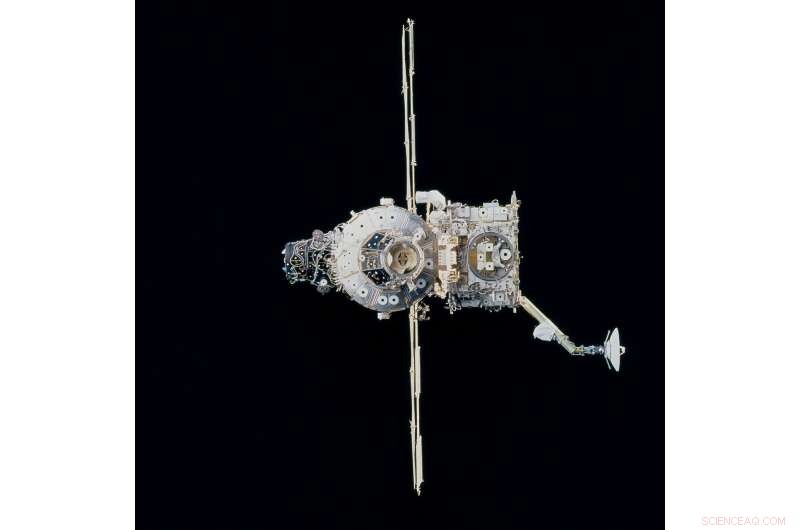
This Oct. 20, 2000 photo made available by NASA shows the International Space Station after separation of the Space Shuttle Discovery. Backdropped against the blackness of space, the Z1 Truss structure and its antenna, as well as the new pressurized mating adapter (PMA-3), are visible in the foreground. (NASA via AP)
-
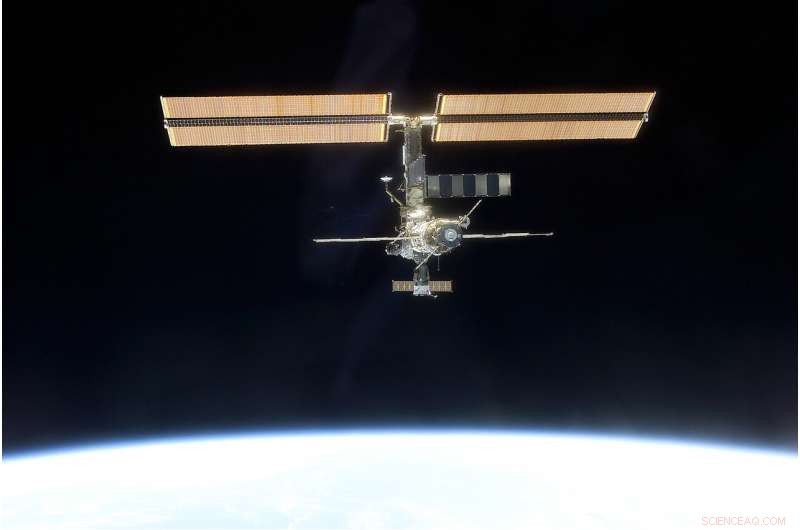
Op deze foto van NASA, the International Space Station, backdropped against black space above Earth's horizon, is seen from the Space Shuttle Discovery on March 19, 2001, after a new crew comprised of cosmonaut Yury Usachev and astronauts James Voss and Susan Helms began several months aboard the station. In the early days of the station, it was a cramped and humid, with just three rooms. It's much larger now, with six sleeping compartments, three toilets, a domed lookout and three high-tech labs. (NASA via AP)
-
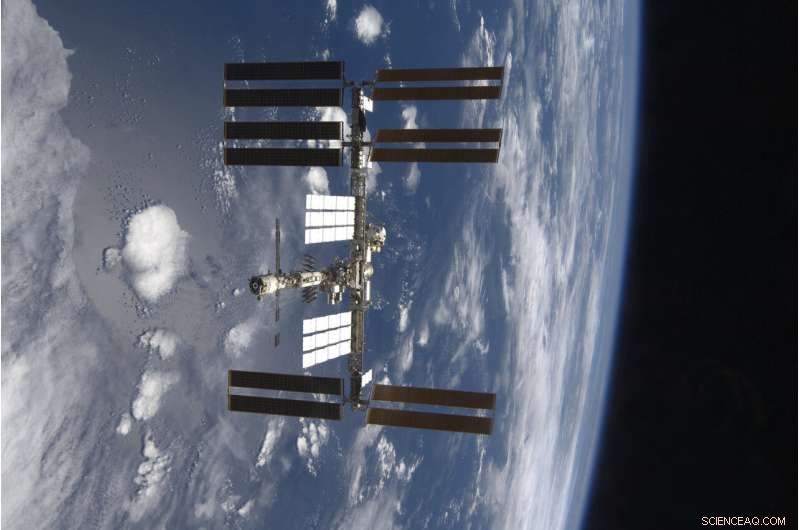
This photo provided by NASA shows the International Space Station as seen from Space Shuttle Endeavour as the two spacecraft begin their relative separation on Nov. 28, 2008. Twenty years after the first crew arrived at the space station, the spacecraft has hosted 241 residents and grown from three cramped and humid rooms to a complex almost as long as a football field, with six sleeping compartments, three toilets, a domed lookout and three high-tech labs. (NASA via AP)
-
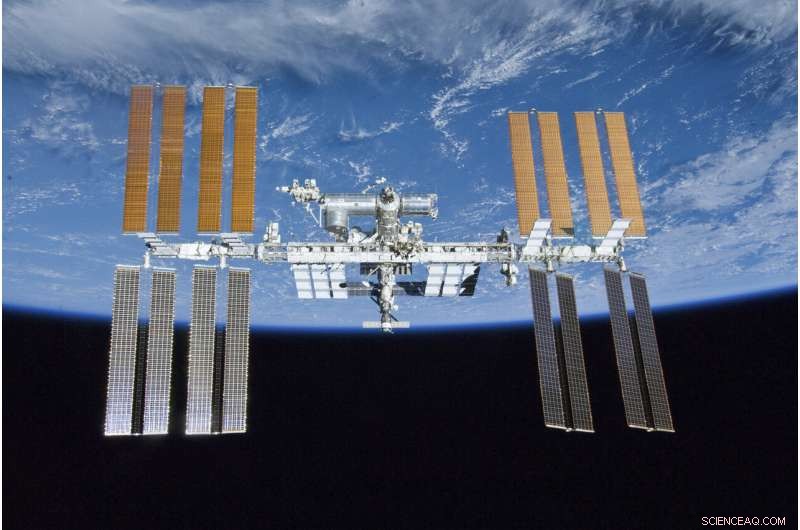
This photo provided by NASA shows the International Space Station as seen from the Space Shuttle Atlantis after the station and shuttle began their post-undocking relative separation on May 23, 2010. Twenty years after the first crew arrived, the space station has hosted 241 residents and grown from three cramped and humid rooms to a complex almost as long as a football field, with six sleeping compartments, three toilets, a domed lookout and three high-tech labs. (NASA via AP)
-
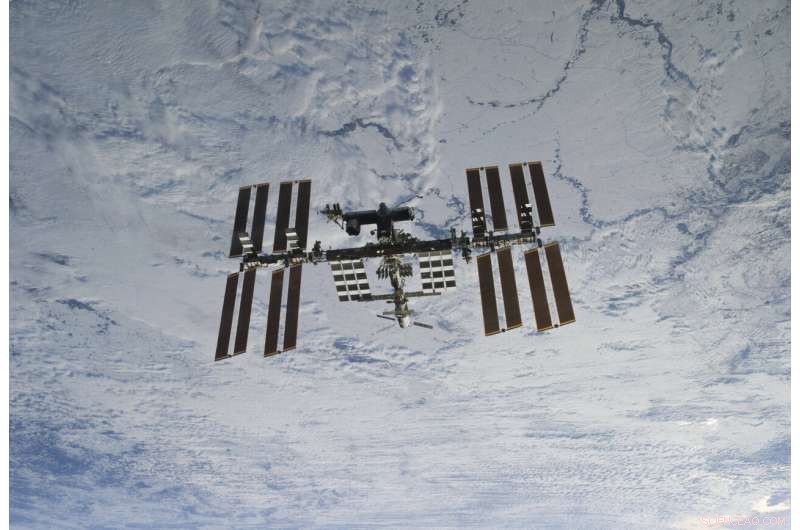
Op deze foto van NASA, backdropped against clouds over Earth, the International Space Station is seen from Space Shuttle Discovery as the two orbital spacecraft accomplish their relative separation on March 7, 2011. From the first crew to the most recent, the No. 1 pastime aboard the station is gazing down at Earth. It takes just 90 minutes to circle the world, allowing crews to soak in a staggering 16 sunrises and 16 sunsets every day. (NASA via AP)
-
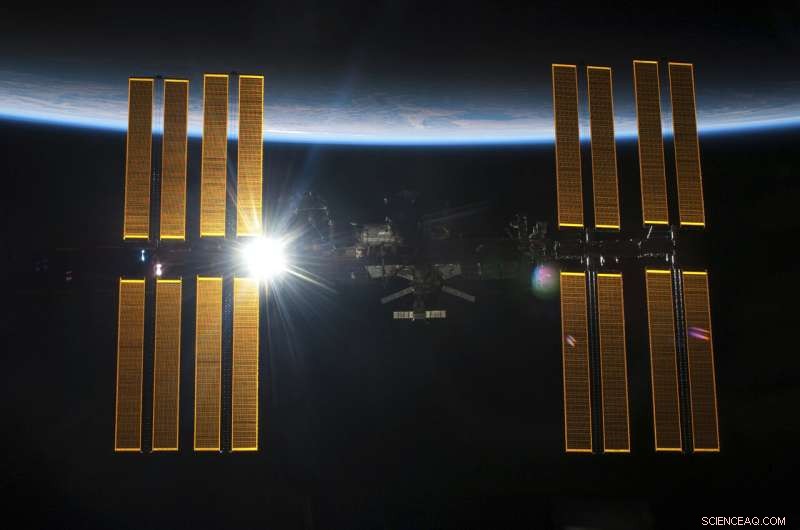
In this image provided by NASA, the International Space Station is seen from the Space Shuttle Endeavour on May 29, 2011, after the station and shuttle began their post-undocking relative separation. It takes just 90 minutes for the space station to circle the world, allowing crews to see 16 sunrises and 16 sunsets every day. (NASA via AP)
-
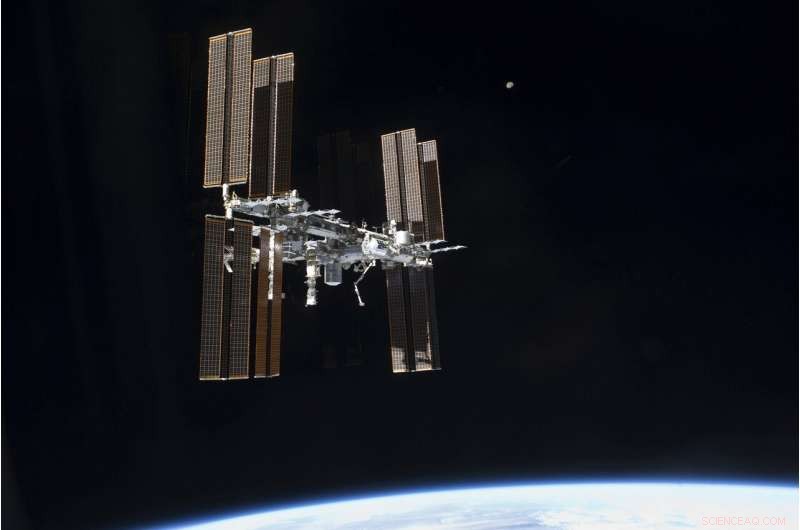
Op deze foto van NASA, the International Space Station is seen from the Space Shuttle Atlantis as the two spacecraft perform their relative separation on July 19, 2011. Above and to the right of the space station is the moon far in the distance. (NASA via AP)
-
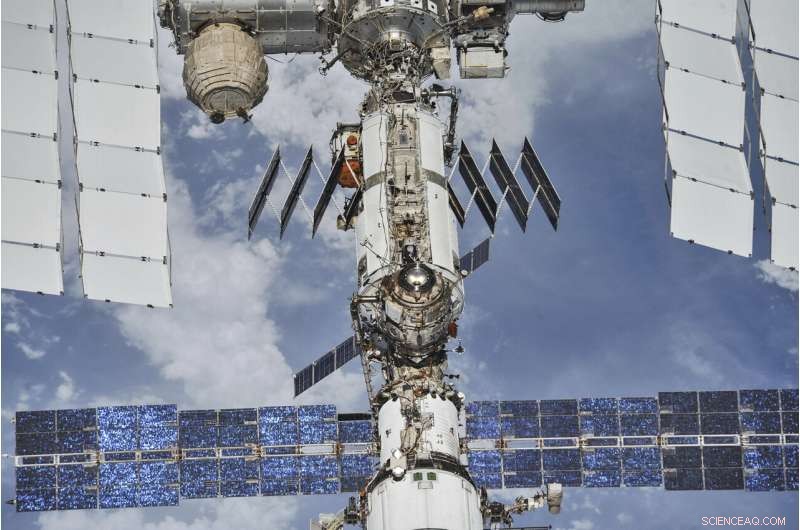
In this photo provided by NASA/Roscosmos, the International Space Station floats above the Earth as seen from a Soyuz spacecraft after undocking on Oct. 4, 2018. NASA astronauts Andrew Feustel and Ricky Arnold and Roscosmos cosmonaut Oleg Artemyev executed a fly around of the orbiting laboratory to take pictures of the station before returning home after spending 197 days in space. Twenty years after the first crew arrived, the space station has hosted 241 residents. (NASA/Roscosmos via AP)
-
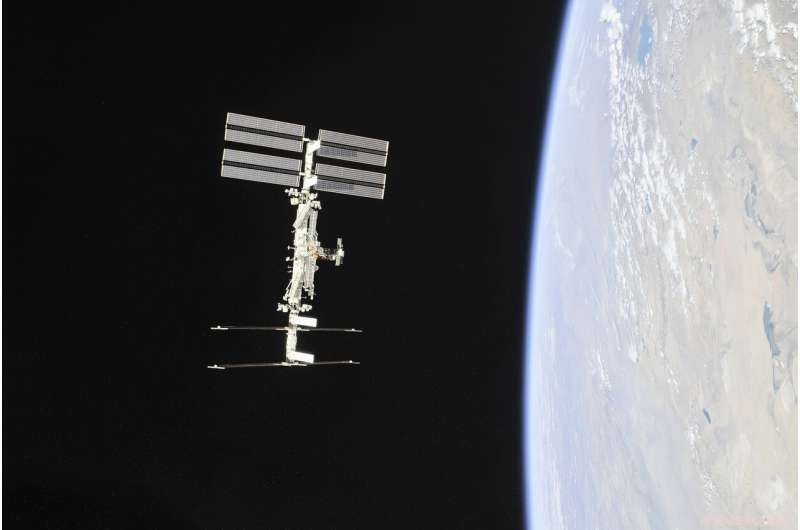
In this photo provided by NASA/Roscosmos, the International Space Station continues its orbit around the Earth as seen from a Soyuz spacecraft departing with NASA astronauts Andrew Feustel and Ricky Arnold and Roscosmos cosmonaut Oleg Artemyev, who had spent 197 days in space. From the first crew to the most recent, the No. 1 pastime aboard the station is gazing down at Earth. It takes just 90 minutes to circle the world, allowing crews to soak in a staggering 16 sunrises and 16 sunsets every day. (NASA/Roscosmos via AP)
When Shepherd and his crewmates returned to Earth aboard shuttle Discovery after nearly five months, his main objective had been accomplished.
"Our crew showed that we can work together, " hij zei.
© 2020 The Associated Press. Alle rechten voorbehouden. Dit materiaal mag niet worden gepubliceerd, uitzending, herschreven of gedistribueerd zonder toestemming.
 Koffiedik is veelbelovend als houtvervanger bij de productie van nanovezels van cellulose
Koffiedik is veelbelovend als houtvervanger bij de productie van nanovezels van cellulose Onderzoekers lossen eiwitstructuur op die verband houdt met erfelijke netvliesaandoeningen
Onderzoekers lossen eiwitstructuur op die verband houdt met erfelijke netvliesaandoeningen Een nieuwe klasse antibioticakandidaten voor de bestrijding van superbacteriën
Een nieuwe klasse antibioticakandidaten voor de bestrijding van superbacteriën De vloeibare assemblagelijn van ingenieurs maakt microdeeltjes van medicijnen duizend keer sneller dan ooit tevoren
De vloeibare assemblagelijn van ingenieurs maakt microdeeltjes van medicijnen duizend keer sneller dan ooit tevoren Polymeren kunnen schade veroorzaakt door stortplaatsen verminderen
Polymeren kunnen schade veroorzaakt door stortplaatsen verminderen
 Beton weegt zwaar aan de Middellandse Zeekust
Beton weegt zwaar aan de Middellandse Zeekust Acht manieren om een wereldwijde voedselcrisis te stoppen
Acht manieren om een wereldwijde voedselcrisis te stoppen Een systeem voor het delen van klimaat om een einde te maken aan de Australische stroomcrisis
Een systeem voor het delen van klimaat om een einde te maken aan de Australische stroomcrisis Studie weerlegt bevindingen achter de uitdaging voor bosherstel in Sierra Nevada
Studie weerlegt bevindingen achter de uitdaging voor bosherstel in Sierra Nevada Nieuwe studie onthult dat bodem een belangrijke aanjager van koolstofvastlegging is
Nieuwe studie onthult dat bodem een belangrijke aanjager van koolstofvastlegging is
Hoofdlijnen
- Vertrouwen op GPS voorkomt dat delen van uw hersenen worden geactiveerd
- Mimetolieten:de gezichten die we zien in rotsformaties
- Een botanisch mysterie opgelost door fylogenetische tests
- Extra Y-chromosoom bij mannen
- Hoe chromosomen vals spelen om kans te maken in een ei te komen
- Twee neuropeptiden in zebravissen geven aanwijzingen voor de complexe neurale mechanismen die ten grondslag liggen aan slaap
- Hoe celorganellen samenwerken
- Wisseling van de wacht - onderzoek werpt licht op hoe planten ademen
- Tropische kevers worden met uitsterven bedreigd
- NASA stopt met Kepler Space Telescope
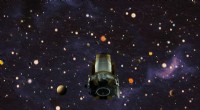
- Team gebruikt massaspectrometrie om de samenstelling van meteorieten te bestuderen

- Zwaardere sterren exploderen misschien niet als supernova, gewoon stilletjes imploderen in zwarte gaten
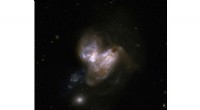
- Nieuwe studie traceert vulkanische getijden van Ios

- De oorsprong van dubbelsterren
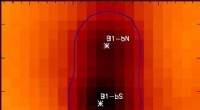
 Herstel van zeezoogdieren aan de westkust verhoogt de consumptie van chinookzalm
Herstel van zeezoogdieren aan de westkust verhoogt de consumptie van chinookzalm Het oplossen van een fossiel mysterie kan de zoektocht naar het leven op Mars helpen
Het oplossen van een fossiel mysterie kan de zoektocht naar het leven op Mars helpen Rijke landen maken zich minder zorgen over energiezekerheid, studie suggereert:
Rijke landen maken zich minder zorgen over energiezekerheid, studie suggereert: NASA vindt windschering beïnvloed nieuwe tropische cycloon 09S
NASA vindt windschering beïnvloed nieuwe tropische cycloon 09S WFIRST voegt stukjes toe aan de puzzel van donkere materie
WFIRST voegt stukjes toe aan de puzzel van donkere materie Porsche waarschuwt voor prijsverhoging Brexit op Britse auto's
Porsche waarschuwt voor prijsverhoging Brexit op Britse auto's Als Elon Musk deze weddenschap verliest,
Als Elon Musk deze weddenschap verliest,  Alsof de ruimte niet gevaarlijk genoeg was, bacteriën worden dodelijker in microzwaartekracht
Alsof de ruimte niet gevaarlijk genoeg was, bacteriën worden dodelijker in microzwaartekracht
- Elektronica
- Biologie
- Zonsverduistering
- Wiskunde
- Italian | Spanish | Portuguese | Swedish | German | Dutch | Danish | Norway | French |

-
Wetenschap © https://nl.scienceaq.com

